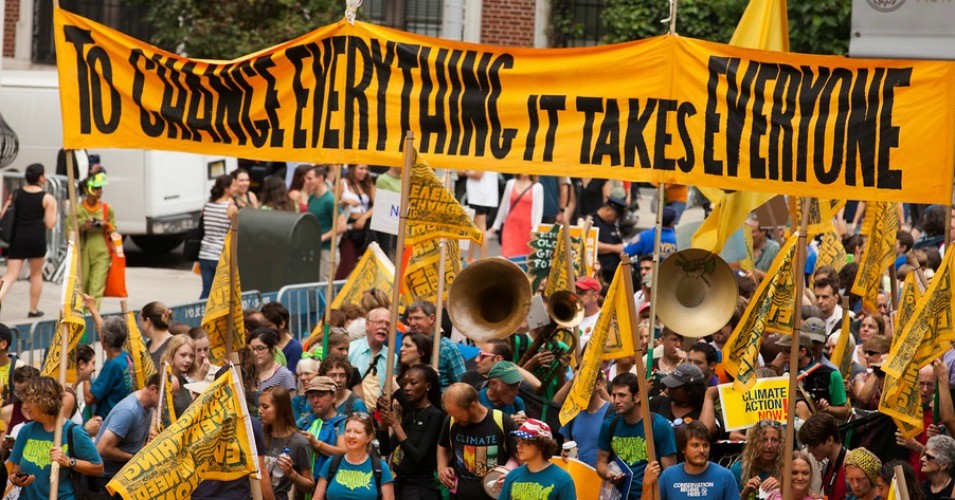-
About
- Our Work
- Get Involved
- Stay Updated

China and the USA ratifying the Paris Agreement, nearly five months after it was opened for signature, has created quite a global buzz.
More recently so, India too has joined this accord and this is indeed huge. So, now we have three of the world’s largest economies and GHG emitters finally agreeing on “Holding the increase in the global average temperature to well below 2?°C above pre-industrial levels and to pursue efforts to limit the temperature increase to 1.5?°C above pre-industrial levels”. This ambitious agreement will certainly have such economies cut off significant amount of carbon emissions, but will be of even more significance to the developing world where people are literally being obliged to change the way they live due to climatic alterations.
With non-significant emissions to contribute to the global atmospheric carbon load, adaptation to the changing climate is deemed as a more feasible means to combat climate change in the developing nations. People adapt to changes in various ways, whether it is installing an air conditioner in homes and offices or farmers planting hardier crop varieties and adopting more resource efficient farming practices.
However, such mechanisms of adapting to changes do not provide a permanent getaway and every one tenth of a degree rise in temperature will demand better adaptation mechanisms, and we may not always be able to keep up. Given the present trend of atmospheric carbon loading and subsequent predicted temperature rise of about 2.5–7 degrees Celsius above pre-industrial levels by the end of the century, vulnerable communities are bound to be tested to the limits for their ability to adapt with the associated changes. There are going to be more erratic rainfalls, heat waves and natural calamities. About half of the world’s species are projected to become extinct and major coastal regions will face threats of overflow and flooding under a scenario world warmer by 2 degrees, and there’s little people can do to deal with sinking islands and drowning homes.
Adapting to changing climatic conditions has economic implications too, and better strategies come at a cost. Approaches to deal with water scarcity in agriculture like drip irrigation or constructing check dams to minimize risks of damage due to increasing occurrence of floods, for instance, will demand more investments than what would have been otherwise. According to a World Bank report, “the cost between 2010 and 2050 of adapting to an approximately 2 degrees Celsius warmer world by 2050 is in the range of $75 billion to $100 billion a year.” What makes this more unfortunate is that it will be the developing countries with already frail economies and vulnerable communities who will have to stand this economic strain. Needless to say, such strains will increase with increasing climatic variabilities which accompany rising temperatures. Communities and social life in these countries continue facing risks of losing their ingenuity making necessary adjustments to cope with changing conditions, and there’s always a limit to how much a community can remodel its social life to externalities before it loses its integrity.
Amidst all this, the Paris Agreement has a key role to play. This aim of limiting global temperature rise to not more than 1.5 degrees is indeed ambitious and may look a bit far-fetched too. However, with a deeper analysis of facts and predictions, we can easily see how this agreement is grounded on reality. Adaptation to climate change is the need of today, there’s no denying that. But creating conditions that will require us to adjust to fewer unwelcome climatic irregularities is just more crucial. Halting the rise in global temperatures will require major CO2 emitters to act quickly and effectively. The agreement to not let global temperatures soar above 1.5 degrees with helping reduce loading of carbon into the atmosphere, will make things a lot better for the developing countries who are facing the worst of consequences of climate change.
Photo Courtesy: Climate March Flickr
About the author
Related Posts
Comments
No comments made yet. Be the first to submit a commentBy accepting you will be accessing a service provided by a third-party external to https://archive.ypard.net/
Get in touch
Email: [email protected]
YPARD Global Coordination UnitHosted by AGRIDEA and the Czech University of Life Sciences Prague
Lausanne, Switzerland and Prague, Czech Republic - Our Work

